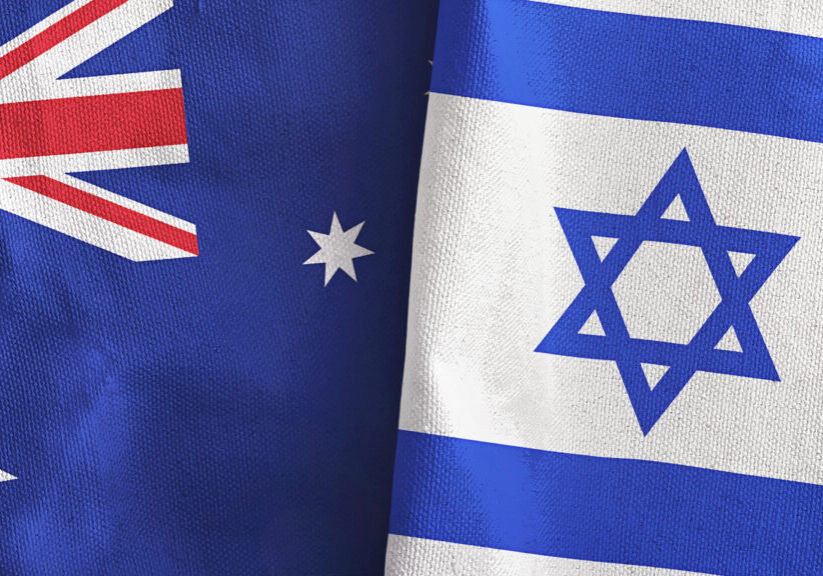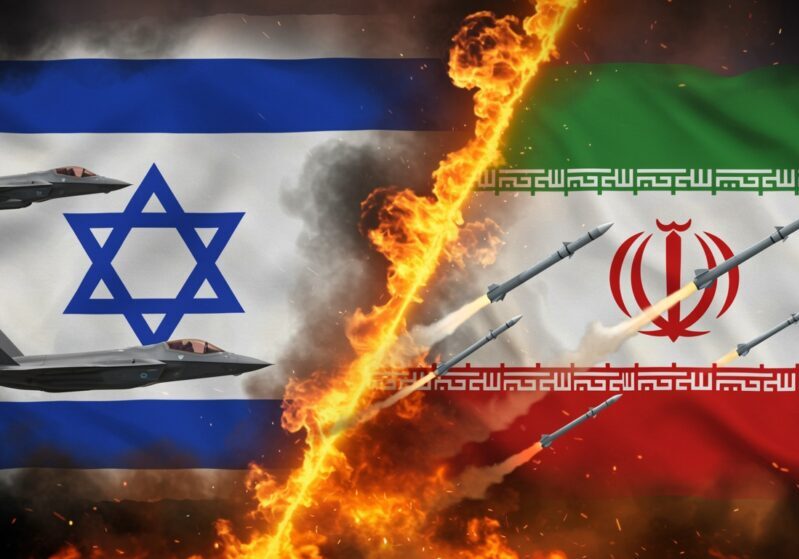Australia/Israel Review
Essay: “Gaza shall be forsaken”
Feb 25, 2025 | Elliott Abrams
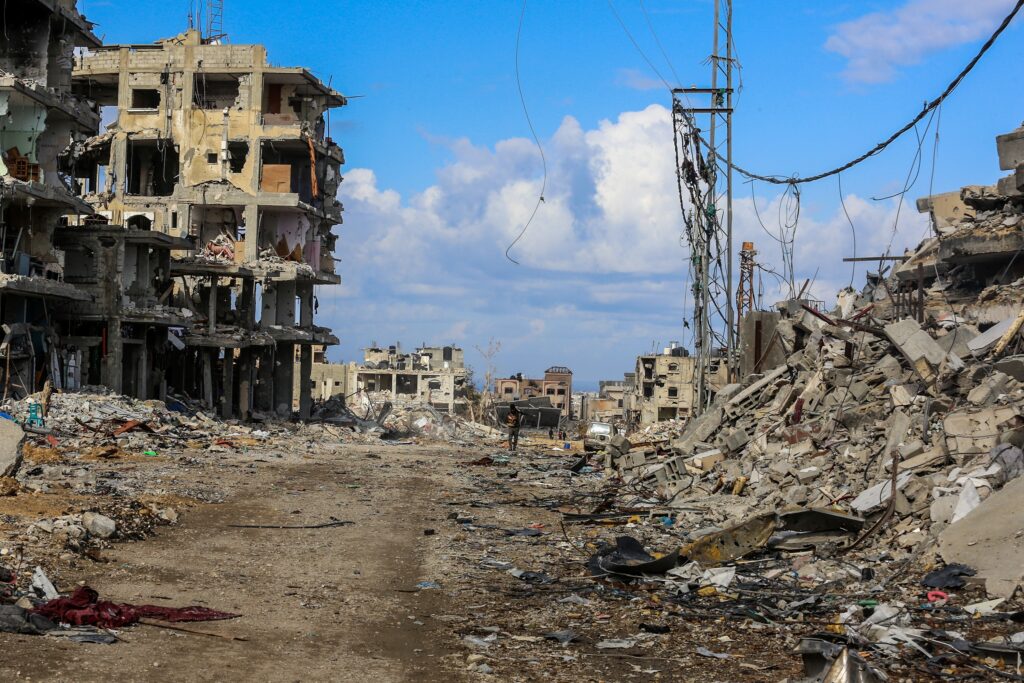
Nobody wants it – but Donald Trump
Gaza has been a problem for a long time. The prophet Zephaniah set the tone:
For Gaza shall be forsaken… Woe unto the inhabitants of the sea coast, the nation of the Cherethites! the word of the Lord is against you; O Canaan, the land of the Philistines, I will even destroy thee, that there shall be no inhabitant (2:4–5).
It didn’t really get better, and 22 centuries later, John Milton has Samson describing the place as little more than a prison:
Promise was that I / Should Israel from Philistian yoke deliver; Ask for this great deliverer now, and find him Eyeless in Gaza at the Mill with slaves.
Little has changed. Nobody wants Gaza – except, it appears, Donald Trump. More on that later.
In our era, the Kingdom of Egypt took over when the British abandoned the Palestine Mandate and ruled Gaza from 1948 to 1967. But the Egyptians never annexed the area and never wanted to. They never viewed it as part of Egypt; Gazans could not become Egyptian citizens or move there. Israel conquered Gaza in the 1967 war, but when it withdrew from Sinai as part of the Camp David accords, it offered to give Gaza back to Egypt. No deal.
“For Gaza shall be forsaken” – initially even by the Palestinians. In the original PLO charter of 1964, article 24 clearly states that “this Organisation does not exercise any regional sovereignty over the West Bank in the Hashemite Kingdom of Jordan, [or] on the Gaza Strip.”
Of course, that changed pretty quickly, but only on paper. The Palestinian Authority in Ramallah always gave Gaza and Gazans low priority. Same with Hamas, as Haviv Rettig Gur has written:
What had Hamas made of Gaza, its society and economy, before the war? A land with so much natural beauty and potential, and recently discovered offshore gas – and what did Hamas build there? Even under the Israeli and Egyptian blockades, the GDP per capita in Gaza was higher than Morocco’s before October 7. Its potential was always enormous. And here’s the thing: That potential remains. But not with Hamas. Because Hamas doesn’t see that potential, and if someone points it out to them, they don’t care. They chose the catastrophic war that began on October 7. They built a vast tunnel system for 17 years whose only purpose was to force the enemy to cut through cities to get to them when that war came. And given what they think of Israelis, Hamas actually expected Gaza’s destruction to be even worse than it is. One powerful signal that it always intended this destruction: That tunnel system is the biggest thing Palestinians have ever built, and Hamas built nothing else in Gaza in all their years of ruling it.

Israel’s traumatic evacuation of some 8,000 settlers from Gaza in 2005, which led to a Hamas takeover, rather than Palestinian development (Image: Isranet)
When the Israelis pulled out of Gaza in the second week of September 2005, there was a fleeting moment of hope for something better. I was serving in the George W. Bush Administration in 2003 when Israeli Prime Minister Ariel Sharon announced his decision to get out of Gaza. About 9,000 Israelis lived there among what was then 1.3 million hostile Palestinians and were protected by hundreds of IDF troops. Hamas terrorism required repeated Israeli military operations in Gaza. The “peace process” between Israel and the Palestinians was stuck, and Sharon – as I recall it – decided to move forward with setting Israel’s permanent border. Whatever he had in mind for the West Bank, he did not think Israelis had a future in Gaza. It was a place without religious significance to Jews. The demography was hopeless. And the burden of protecting the 21 Israeli settlements was too great. In 2005, the withdrawal was completed, and Gaza was left to the Palestinian Authority to govern.
Shimon Peres, then Sharon’s partner in the withdrawal from Gaza, spoke of “making Gaza Singapore”. I can recall his saying poetically, with throaty Israeli ‘r’s, “we shall turn Gaza from terrorism to tourism.” The Israeli settlers had built a network of more than 3,000 greenhouses, which together provided about 15% of all Israeli agricultural exports – fruits, vegetables, and flowers as well. The Israeli owners did not want to leave them for the Palestinians, uncompensated, so a group of Jewish philanthropists put up the money and bought them. The Gazans would be given a head start on economic development, with the greenhouses as models.
Zephaniah might have prophesied what then happened: When the Israelis left, crowds looted and destroyed the greenhouses within one week. Here is the NBC report from Sept. 13, 2005:
Palestinians looted dozens of greenhouses on Tuesday, walking off with irrigation hoses, water pumps and plastic sheeting in a blow to fledgling efforts to reconstruct the Gaza Strip. American Jewish donors had bought more than 3,000 greenhouses from Israeli settlers in Gaza for $14 million last month and transferred them to the Palestinian Authority. Former World Bank President James Wolfensohn, who brokered the deal, put up $500,000 of his own cash.
Palestinian police stood by helplessly Tuesday as looters carted off materials from greenhouses in several settlements, and commanders complained they did not have enough manpower to protect the prized assets. In some instances, there was no security and in others, police even joined the looters, witnesses said… The failure of the security forces to prevent scavenging and looting in the settlements after Israel’s troop pullout Monday raised new concerns about Gaza’s future.
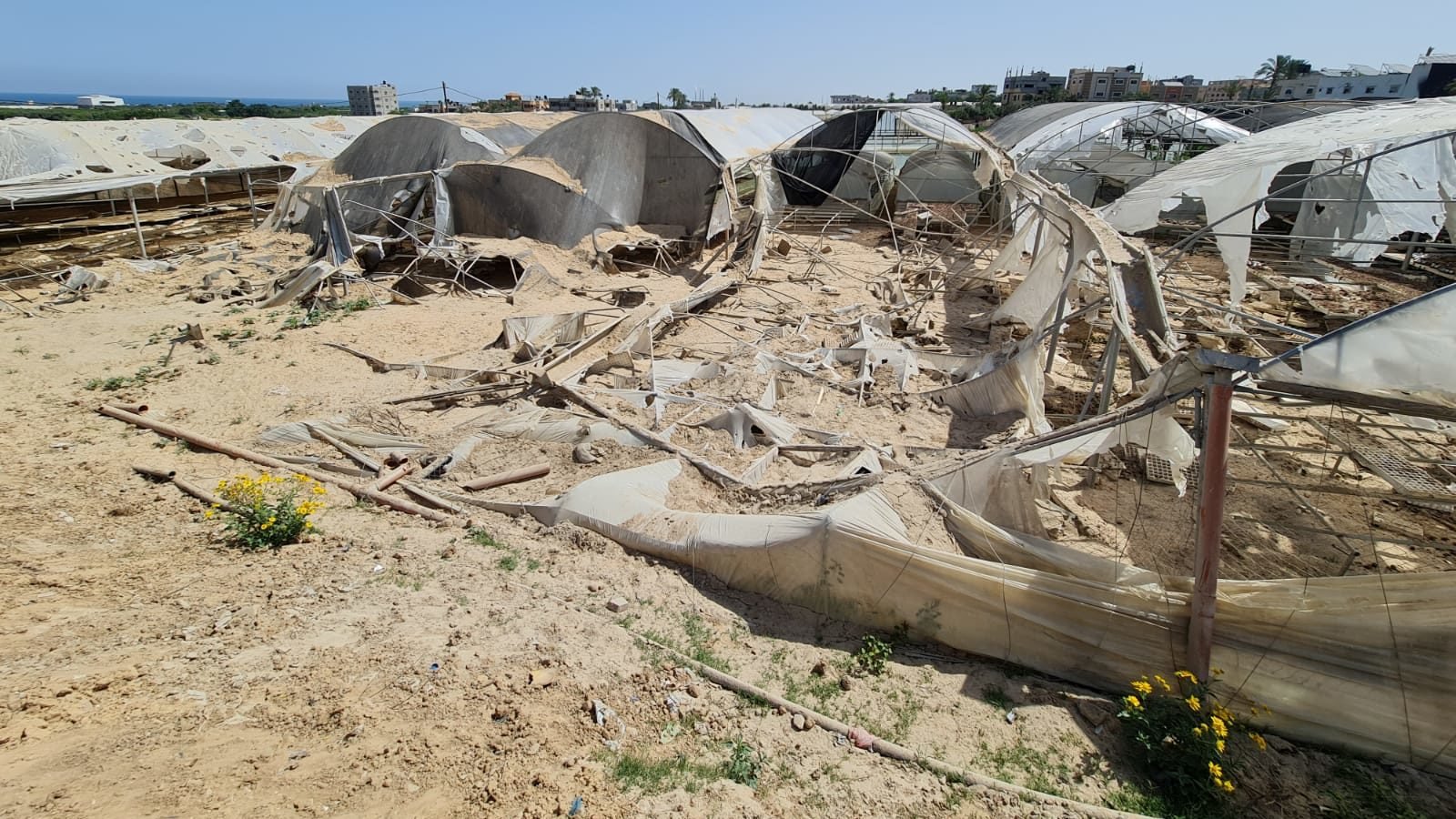
Valuable and productive greenhouses in Gaza looted and destroyed in the wake of Israel’s 2005 disengagement (Image: X)
We in Washington had been concerned that the Palestinian Authority, the governing body in the West Bank, might not be up to the job of governing Gaza. I met in Sharm el-Sheik with Egypt’s second-most important official after President Hosni Mubarak, intelligence chief Omar Suleiman. Could the PA handle it? Could they police up Hamas? Suleiman was angry that we even raised this possibility, literally pounding on the table and telling us Egypt had it all in hand. I have men in Gaza, he said, we know everything that’s going on, and if I need to send more men, I will. Egypt has control.
That was 2004. After the Israelis left in September 2005, Hamas bided its time for about 18 months and then took a week to overpower the PA forces and take control. Egypt said and did precisely nothing.
Neither did the other Arab states. For all of them, Gaza was an embodied argument: Israel is illegitimate, all Gazans are displaced refugees who have the “right of return” to the orange groves they left behind. They had no more interest in actual living Gazans than the authorities in Cairo. It’s not that Arab refugees are never, ever accepted anywhere. After all, Germany took about 1.2 million Syrian refugees during the civil war in the past decade, and there are millions more in Turkey (3-4 million), Jordan (about 650,000), Iraq (about 250,000), and Lebanon (about 850,000). Even Egypt took in over 100,000 Syrians. And there are about 2 million Iraqi refugees living in the Arab world (Jordan, Syria, Lebanon, and perhaps 150,000 in Egypt) and Turkey.
But Gazans do not merit this compassion. For if they leave, they are abandoning the great struggle against the Jewish state. Think of it this way: In all the wars of the past two centuries – the First and Second World Wars, Korea and Vietnam, Iraq and Afghanistan, Ukraine – there has never been a case in which civilians were absolutely forbidden to flee the battlefields. Until Gaza. When the current war began, I was sure Egypt would not take masses of Gazans, but I thought that – with enough American pressure – it would agree to take some. Perhaps children. Perhaps the elderly. Perhaps mothers and daughters. But the Egyptians were true to the great Palestinian cause, and the number was zero.
And then, in January 2025, along came Donald Trump, sounding a bit like Shimon Peres. Trump did not demonise Gazans. He spoke of the majority of them as victims who deserved something better:
I also strongly believe that the Gaza Strip, which has been a symbol of death and destruction for so many decades and so bad for the people anywhere near it, and especially those who live there and frankly who’s been really very unlucky…
It should not go through a process of rebuilding and occupation by the same people that have really stood there and fought for it and lived there and died there and lived a miserable existence there. Instead, we should go to other countries of interest with humanitarian hearts, and there are many of them that want to do this and build various domains that will ultimately be occupied by the million Palestinians living in Gaza, ending the death and destruction and frankly bad luck… The people will be able to live in comfort and peace… They’re going to have peace; they’re not going to be shot at and killed and destroyed like this civilisation of wonderful people has had to endure. It’s right now a demolition site. This is just a demolition site. Virtually every building is down. They’re living under fallen concrete that’s very dangerous and very precarious. They instead can occupy all of a beautiful area with homes and safety and they can live out their lives in peace and harmony instead of having to go back and do it again. The US will take over the Gaza Strip and we will do a job with it too.
I do not believe that this will happen. But Trump has wonderfully challenged the Arab view of Gaza as central to the Palestinian concept of “steadfastness” (Sumud in Arabic) needed against the Zionist enemy, and he has rightly called it inhuman. In fact, he has jettisoned the view that the most important thing about Gaza is its role in the “two-state solution” that will produce a new sovereign state of Palestine alongside Israel.
He said, in that same press conference with Israeli Prime Minister Netanyahu, that “The only reason the Palestinians want to go back to Gaza is they have no alternative.” That is a reproach to the Arabs and an answer to those who call moving Gazans out of Gaza some kind of war crime. Trump is right: Many, many Gazans would dearly love to leave, but they have been trapped. If visas to almost anywhere were available, how many would jump at them? A third of the population? Half? Three-quarters? More? Perhaps steadfastness, and even fighting the Jews, is too great a luxury when you look around and see armed Hamas terrorists, no jobs, and no homes. But no one is offering those visas; apparently refugees from Iraq or Syria are one thing, and Palestinians are another. And unless that changes, Trump’s plan will not get off the ground.
Trump’s plan tacitly understands another reason Gaza has never developed into the Singapore that Shimon Peres dreamed of, and that is the condition of the society that has developed in Gaza in the past two decades of Hamas control. Economic and political development require both sound government and a culture in which the polity can advance. One look at Haiti is a reminder of that obvious point. Trump’s plan accepts that development will not happen in the current Gaza situation, where society is permeated by corruption, brutality, hatred, and terror.
This is a simple fact about life and is not a reflection of prejudice against Palestinians. Gouverneur Morris, one of George Washington’s envoys to France, watched the revolutionaries there play at becoming the next United States of America. He wrote in July 1789, just days before the storming of the Bastille, that “they want an American Constitution, with the exception of a King instead of a President, without reflecting that they have not American citizens to support that constitution.” It is a profound point. Governments and constitutions are what Marx would have called the superstructure, but they must be built on an actual, existing society. The Constitution was not a piece of paper but the product of the free society that had been built by colonists in British America, and by their children and grandchildren.
Gaza does not have Morris’ “American citizens” either, and Trump recognises that pouring more money into it from Qatar or UNRWA (or the United States) will only reproduce what is there now: more terrorism, more death and destruction, and more misery. So he, in effect, suggests that we rely on Zephaniah’s vision for a while – “there shall be no inhabitant” – perhaps for ten years, while the physical Gaza is transformed. As Trump put it, “Do a real job, do something different. Just can’t go back. If you go back, it’s going to end up the same way it has for years.”
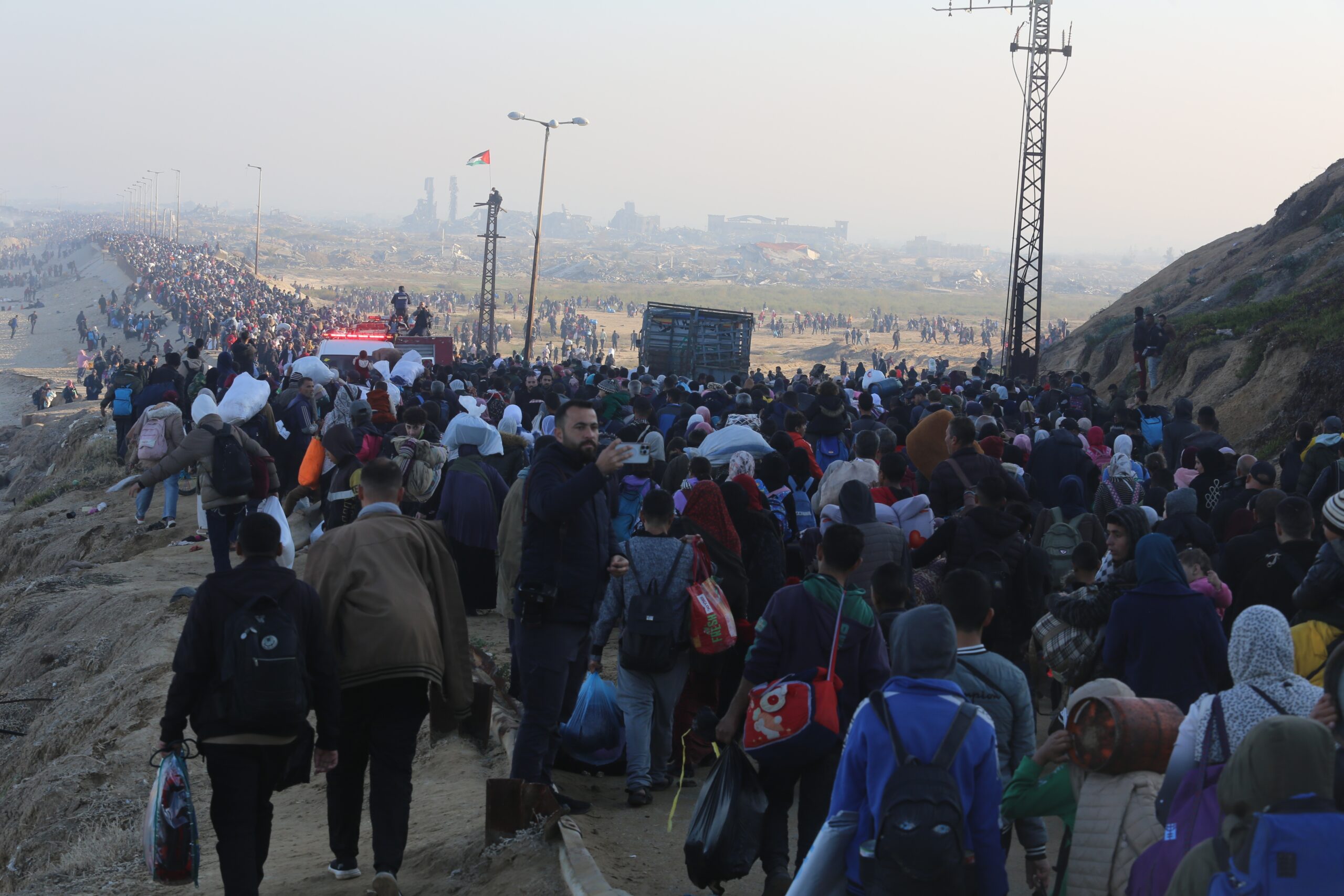
Gazan Palestinians deserve proper “homes and safety”, Trump said (Image: Anas Mohammed/ Shutterstock)
Perhaps ten years of living without Hamas in a variety of countries would transform Gazans, too. Some would stay in the places to which they moved, while others would want to go “back” to the new Gaza – but this time not as UN-certified permanent “refugees” from the ‘naqba’ of 1948. This time, as people with options for a decent life who chose to live in Gaza because it offered economic opportunity and peace.
It’s fanciful, and very, very unlikely. But it’s a better, truer, understanding of what led to Gaza’s current situation and what could possibly lead out of it than decades of “peace processing” and UN resolutions, which in the end have produced terrorism, war, and misery.
Trump is treating Gaza as a physical place and its people as suffering humans, which is more than has ever been done by any Arab League resolution condemning Israel and calling it a war crime to allow Gazans to move away. “We will not allow the rights of our people… to be infringed on,” declared Palestinian President Mahmoud Abbas, who has not permitted an election in 19 years. Trump’s scheme would “undermine the core of the Palestinian national project,” said Algeria, which is true if the core of that project is endless violence aimed at destroying Israel. An Arab League statement said Trump’s proposal would “threaten the region’s stability” which is also true if, by stability, is meant the 77 years of refusal to accept Israel in peace as a Jewish state.
Gaza is, as Trump called it, a “hellhole”, and history suggests it will remain so. Not because of anything the Israelis did. They left it in 2005 with an open possibility for a better future. Not because of Donald Trump, who in his first weeks in office offered a different future and asked Arab governments to think for once about Gazans as people rather than cannon fodder in the struggle against Israel. But it is apparently still easier to dream on about the “two-state solution” and the “right of return”, and far easier to scream about Israeli crimes and Palestinian victims, than to let the Jews live in peace. Until that changes, “Gaza shall be forsaken.”
Elliott Abrams is senior fellow for Middle Eastern Studies at the US Council on Foreign Relations and chairman of the Tikvah Fund. He served in the State Department and National Security Council in the Reagan, George W. Bush, and Trump Administrations. © Commentary Magazine (commentary.org), reprinted by permission, all rights reserved.
Tags: Gaza, Hamas, Israel, Palestinians


